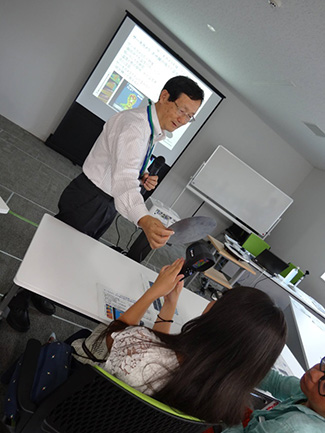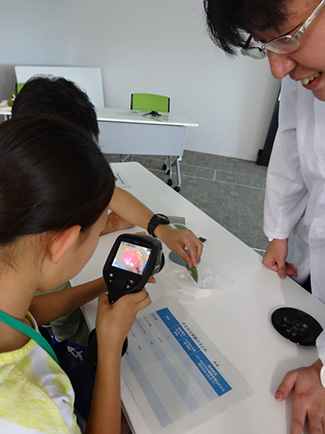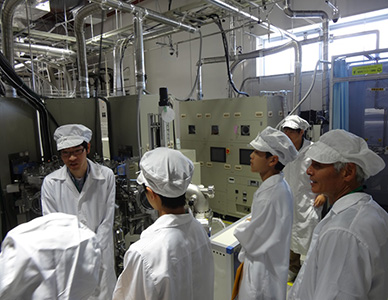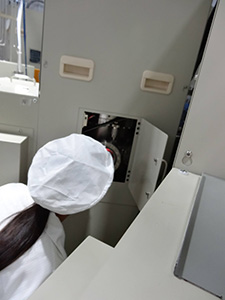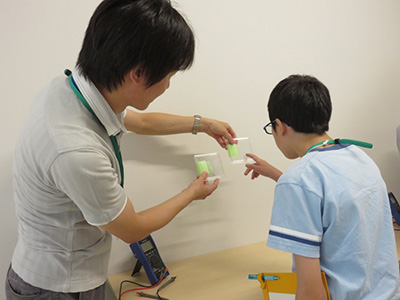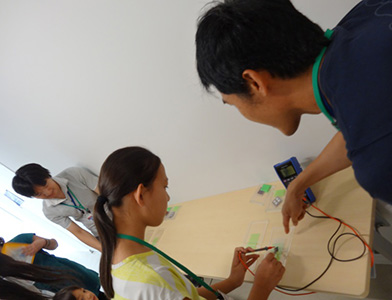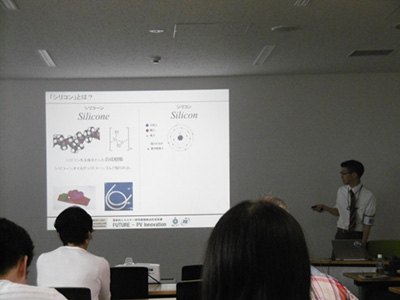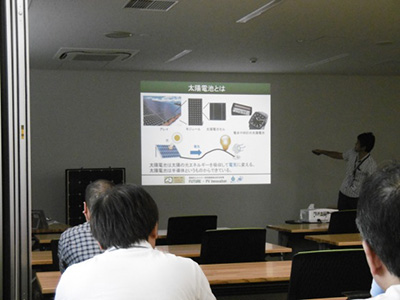"FUTURE-PV Innovation" Project participated in '2015 Openhouse of Fukushima Renewable Energy Institute, AIST (FREA)'
Openhouse of Fukushima Renewable Energy Institute, AIST (FREA, Koriyama City in Fukushima prefecture) was held on Saturday, August 22, 2015 and about 250 people visited it. "FUTURE-PV Innovation"Project exhibited there together with it.
- The 3rd Solar Cell Workshop for Junior High School Students
The workshop had been held at the Koriyama city general support center for children until last time. This time, it was held at FREA where "FUTURE-PV Innovation" Project is located, and the program was arranged as that the participants could feel more familiar with leading edge research site.
The workshop was focused on mainly junior high school students and 18 people including guardians and general public participated in it on that day.
The Research Director Makoto Konagai of this project, Professor of Advanced Research Laboratories of Tokyo City University, lectured the principle and characteristics of photovoltaics and the photovoltaic system and introduced the research center of our project that had kicked into gear from April last year after gathering researchers and experimental apparatus from universities all over the country to FREA.
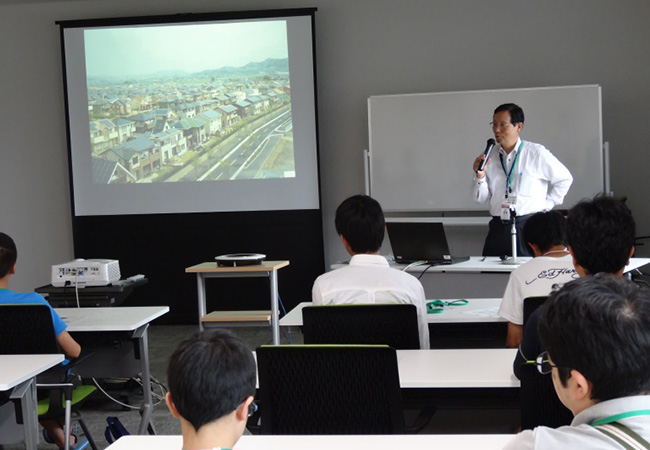
Three kinds of experience sections were prepared and the participants experienced in each section variously after the lecture. The researchers of the project took a role as lecturer and assistant in each section, and they supported the participants in experience.
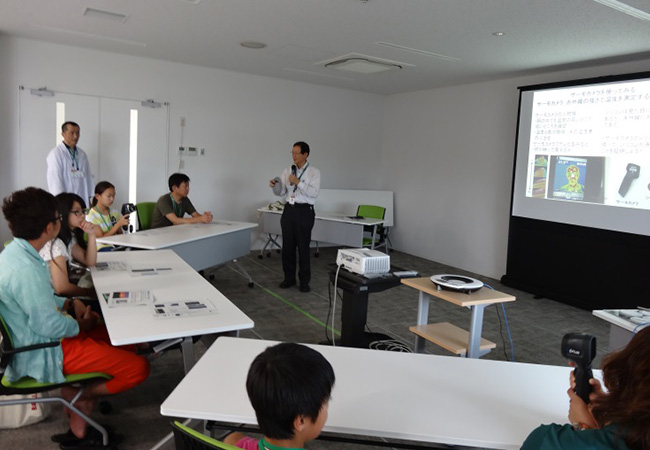
Ice cutting experience using SiC plate which is used for solar cell was conducted in the Science Show section by the Research Director Konagai. The participants confirmed heat conduction in the plate much faster than in stainless steel and glass by observing with thermography and understood the ice could be cut due to this property.

They learned principle and properties of laser, application of laser processing and how to use it for a solar cell manufacturing process in the section of observation of wafer processing by Laser Marker.。
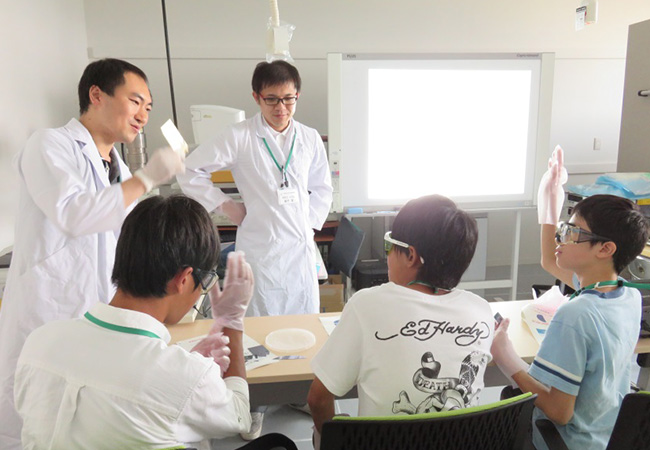
Laser is used for marking of the sample numbers and cutting of Si wafers in the research of the project, and the participants got experience of cutting wafers processed by laser.
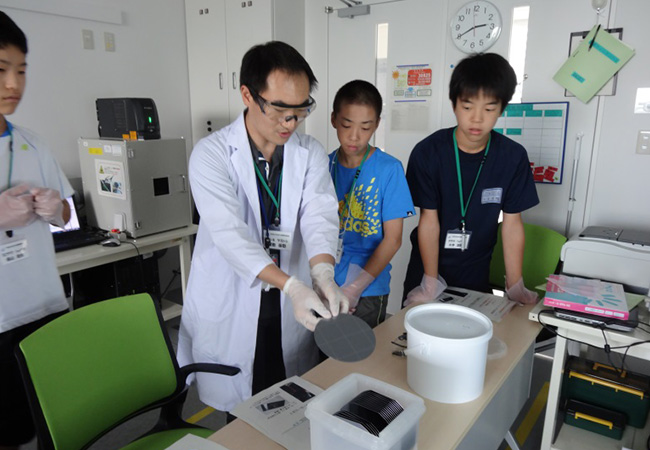
They observed marking on the sample wafer and learned the difference between the material that laser could process and the other, for example, glass, that it couldn't.
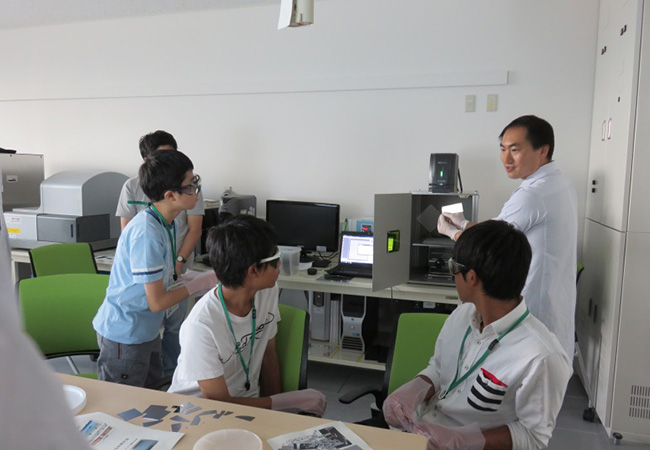
In the Plasma Demonstration section, they observed plasma using plasma-CVD system which was used for making thin-film solar cells. They confirmed the colors of the plasma generated using N2 and H2 gases. From this, they learned the reason why the colors of aurora, which is plasma phenomenon in nature, are red and green.
And they measured the resistivity of thin-films used for solar cells by testers and confirmed the value of resistivity varies with the kind of film. They learned that a solar cell is made of combination of the films which have various properties.
At the end of the workshop, the Research Director Konagai handed a 'Future Doctoral Degree Certificate' and memento to each participant.
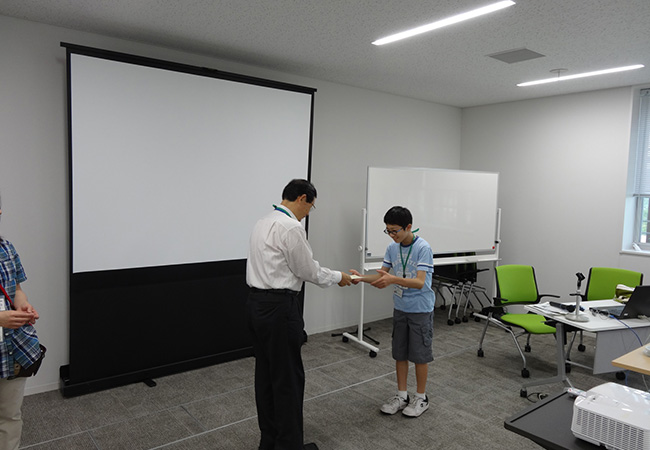
Although it was the solar cell workshop planned mainly for junior high school students, there were many participants with their families this time and it seemed that their parents and small children also enjoyed this workshop.
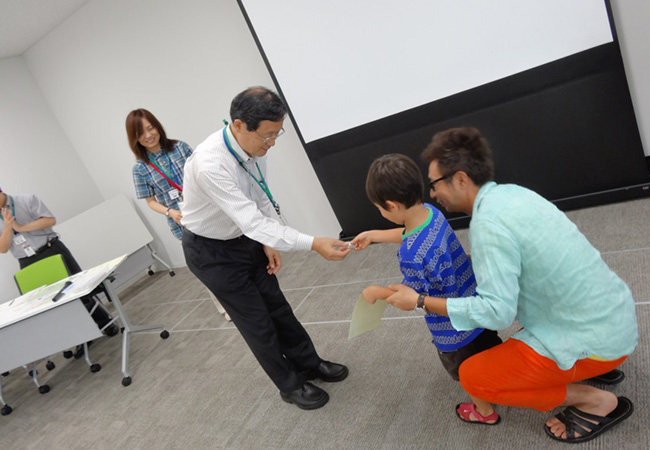
- Laboratory Tour
The Laboratory Tour for visiting the research sites in FREA was held seven times and each tour was divided into two groups. About 210 people participated in this tour. The laboratories of our project were also included in the tour and the researchers introduced our experimental facilities as well as an overview of the project to the participants.
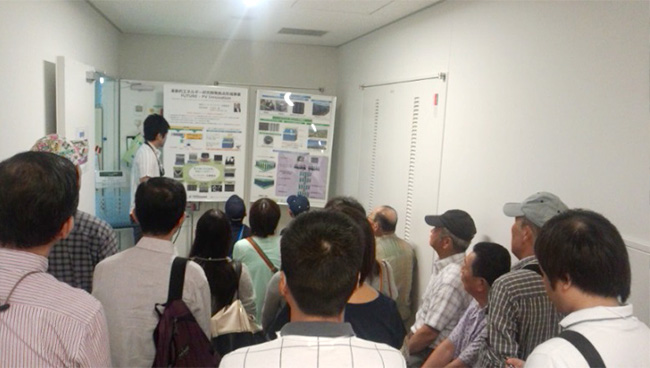
- Mini-Lectures
Mini-Lecture was a lecture where the young researchers of each field in FREA explained leading edge research in a comprehensible way. Two researchers of the project gave lectures as lecturers.
The researcher Satoshi Ono gave the lecture on 'Super Introduction! Three Methods for Growing Si Crystal' in the morning session. He started to give it from the explanation of the history of application of solar energy since the birth of the solar system and explained the method for growing Si crystal. In conclusion, he showed off his enthusiasm for the research, "I would like to resolve the fight over energy in the world by photovoltaics."
The researcher Yusuke Abe gave the lecture on 'Fabrication method for Highly-efficient Si Solar cells' in the afternoon session. He explained the principle of photovoltaics, the properties of Si solar cell, fabrication process for it and the aim for achievement of the conversion efficiency improvement that was the target of the project in a comprehensible way.
- Exhibition of the Collection of Solar Cells
We exhibited a large variety of solar cells and modules from the historically early days to recent years, watches and calculators manufactured at the time when solar cells had begun to be introduced that the Research Director Konagai owned. "I feel nostalgic", "it reminds me of this," adult visitors said, and stopped to look at the collection.
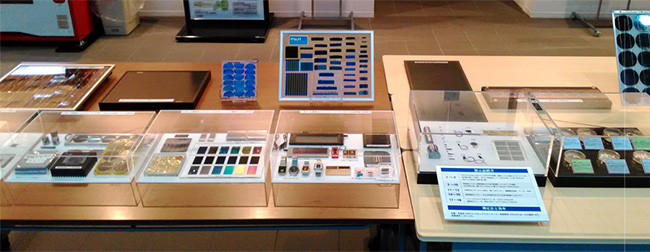
We plan to continue activities to promote interest in our project and solar cells for the general public.

